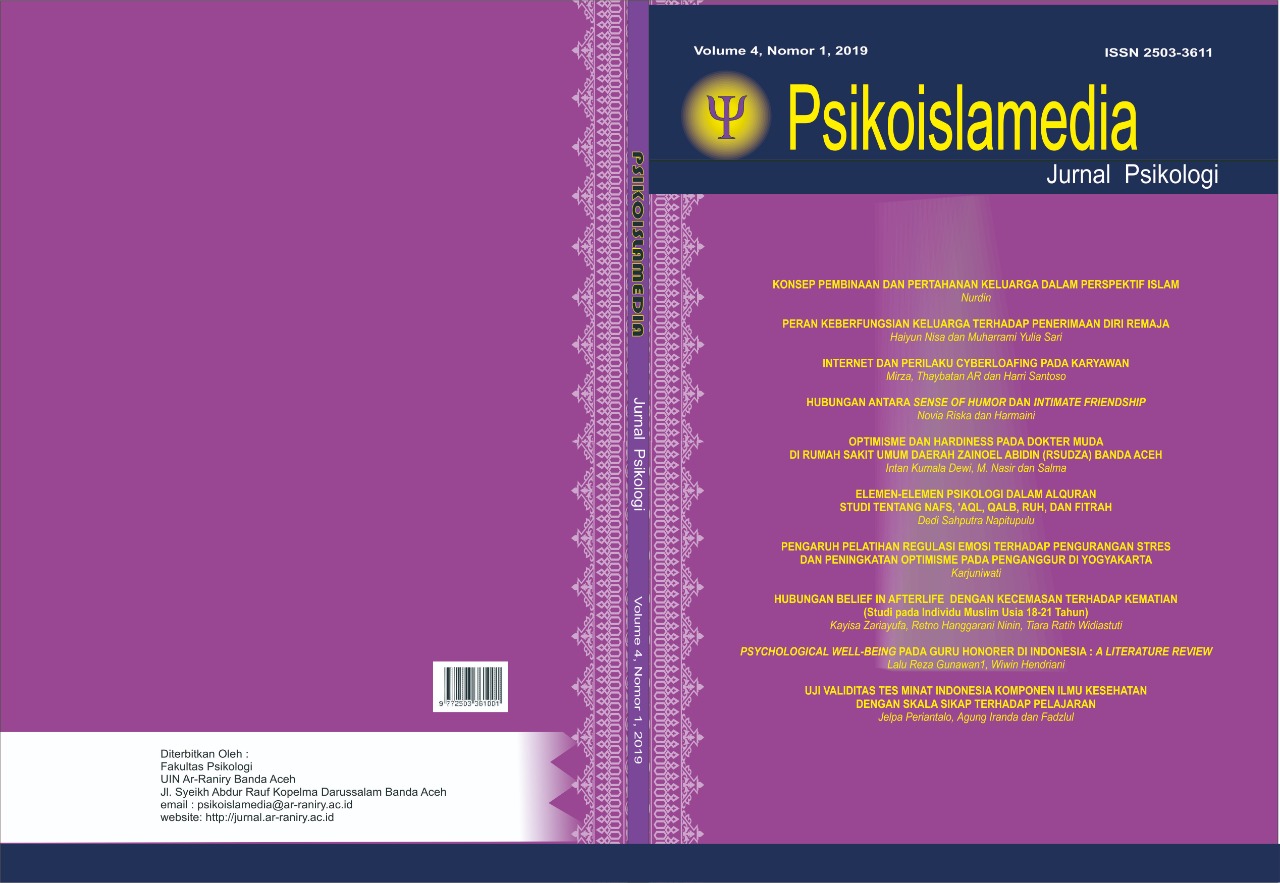References
Aidina, W. (2013). Hubungan antara Penerimaan Diri dengan Optimisme Menghadapi Masa Depan pada Remaja di Panti Asuhan (Skripsi). Banda Aceh : Universitas Syiah Kuala.
Berger, E. M. (1952). The relation between expressed acceptance of self and expressed acceptance of others. Journal Abnormal Psychology, 47(4), 778-782. doi : 10.1037/h0061311Family-Based Care (tanpa tahun). Diakses pada tanggal 28 Juni melalui http://www.sos.or.id/what-we-do/family-based-care
Bernard , M. E., Vernon, A., Terjesen, M., & Kurasaki, R. (2013). The strength of self acceptance: theory, practice and research. Self-Acceptance in the Education and Counseling of Young People (hal. 155-192). doi : 10.1007/978146146806610
Carson, S. H., & Langer, E. J. (2006). Mindfulness and self-acceptance. Journal of Rational-Emotive & Cognitive-Behavior Therapy, 24(1), 29-43. doi : 10.1007/s1094200600225.
Cox, F. D., & Demmit, K. (2014). Human intimacy : Marriage, the family, and its meaning, ed. 9. United States : Wadsworth Cengage Learning.
Gandaputra, A. (2009). Gambaran Self Esteem Remaja yang Tinggal di Panti Asuhan. Jurnal Psikologi, 7(2), 52-70. Diakses melalui http://ejurnal.esaunggul.ac.id/index.php/Psi/article/view/85/82.
Hemmings, L. T. (2010). Adolescents in foster care: exploring their involvement in foster placement success (Thesis). Diakses melalui http://etheses.bham.ac.uk/1743/1/Hemmings_11_Clin_Psy_D_Vol_1.pdf
Hurlock, E. B. (2005). Psikologi Perkembangan Suatu Pendekatan Sepanjang Rentang Kehidupan, ed. 5. (Alih Bahasa : Istiwidayanti & Soedjarwo). Jakarta : Erlangga.
Kementrian Sosial Republik Indonesia. (2011). Standar Nasional Pengasuhan Untuk Lembaga Kesejahteraan Sosial Anak. Diakses pada tanggal 10 April 2014 melalui http://www.pksa-kemensos.com/wp-content/uploads/2011/01/standart-pengasuhan.pdf.
Madigan, S., Quayle, E., Cossar, J., & Paton, K. (2013). Feeling the same or feeling different? An analysis of the experiences of young people in foster care. Adoption & Fostering, 37(4), 389-403. doi : 10.1177/0308575913508719
Neimetz, C. (2011). Navigating family roles within an institutional framework: an exploratory study in one private chinese orphanage. Journal Child Family Study, 20, 585-595. doi : 10.1007/s1082601094312.
Noller, P., Seth-Smith, M., Bouma, R., & Schweitzer, R. (1992). Parent and adolescent perceptions of family functioning: A comparison of clinic and nonclinic families. Journal of Adolescence, 15(2), 101-112. doi : 10101601401971(92)900413.
Octiva, S. (2013). Book of abstracts; The 4th international conference on center on Aceh and Indian Ocean Studies. In Mahdi, S. (Ed). Perbedaan proporsi gangguan mental pada remaja yang tinggal di panti asuhan dan tinggal dengan kawom paska tsunami (h.30). Aceh: ICAIOS.
Oke, N., Rostill-Brookes, H., & Larkin, M. (2011). Against the odds : Foster carers’ perceptions of family, commitment and belonging in successful placements. Clinical Child Psychology, 18(1), 7-24. doi : 10.1177/1359104511426398
Papalia, D. E., Olds, S. W., Feldman, R. D. (2009). Human Development: Psikologi Perkembangan, ed.10. (Alih bahasa: B. Marwensdy). Jakarta: Salemba Humanika.
Putri, G.G., Agusta, P., & Najahi, S. (2013). Perbedaan self acceptance (Penerimaan Diri) pada Anak Panti Asuhan Ditinjau dari Segi Usia. Proceeding PESAT (Psikologi, Ekonomi, Sastra, Arsitektur & Teknik Sipil), 5. 11-16. Diakses pada tanggal 10 April 2014 melalui http://ejournal.gunadarma.ac.id/index.php/pesat/article/view/894/792.
Ryan, C. E., Epstein N. B., Keitner, G. I., Miller, I. W., & Bishop, D. S. (2005). Evaluating and treating families : the McMaster approach. New York : The Guilford Press.
Santrock, J.W. (2007). Remaja, ed. 11(1). (Alih Bahasa : B. Widyasinta). Jakarta : Erlangga.
Savitri, J., Kiswantomo., H., & Ratnawati. (2012). Studi Deskriptif Mengenai Psychological Well-Being pada Remaja SOS Desa Taruna Kinderdorf Bandung. Jurnal Zenit, 1 (1). Diakses pada tanggal 02 Juni 2014 melalui http://repository.maranatha.edu/id/eprint/4466
Stanescu, D. F., & Romer, G. (2011). Family Functioning and Adolescents’ Psychological Well Being in Families with a TBI parent. Journal Psychology, 2(7). 681-686. doi : 10.4236/psych.2011.27104.
Surbakti, E. B. (2009). Kenalilah Anak Remaja Anda. Jakarta : PT. Elex Media Komputindo.
Walecka-Matyja, K. (2014). Adolescent personalities and their self-acceptance within complete families, incomplete families and reconstructed families. Polish Journal of Applied Psychology, 12(1), 59-74. Diakses melalui : http://www.pjap.psychologia.uni.wroc.pl/sites/default/files/2014/12/1/4/Katarzyna%20Wale%CC%A8cka-Matyja-2014-12-1-4.pdf
Walsh, F. (2012). Normal family processes: Growing diversity and complexity, The New Normal Diversity and Complexity in 21st-Century Families. (pp. 3-27). New York: Guilford.
Zubrick, S. R., William, A. A., Silburn S. R., & Vimpani, G. (2000). Indicators of Social and Family Functioning. Diakses melalui https://www.dss.gov.au/sites/default/files/documents/indicators_of_social_and_family_functioning_full_report.pdf



